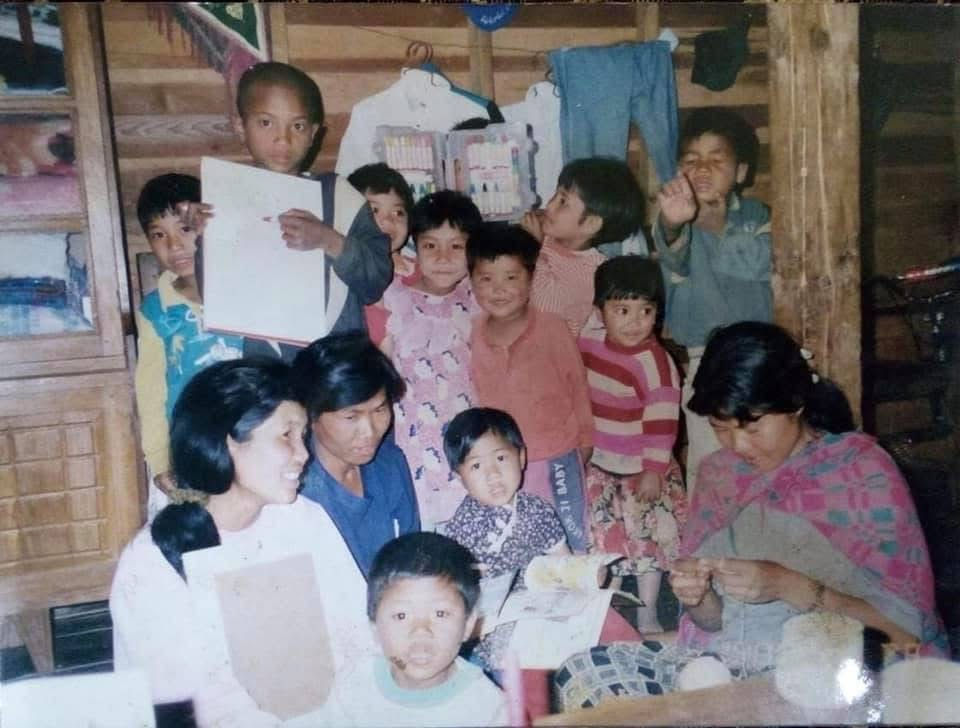Staying Styled + Sustainable
- Hayley Shay McCoy

- Oct 9, 2020
- 6 min read
Updated: May 22, 2023

The latest trends seem to flash by in seconds; one day we’re loving animal print and tie dye, and the next day it’s only acceptable to be wearing basics and neutrals. Fast fashion plays into these trends by feeding us collections that arrive weekly and creating cheaply made pieces of clothing that are pretty much made to be worn a few times before unraveling. Trying to keep up can be overwhelming and mentally and financially draining, especially in an instant gratification culture caught up with fitting in and keeping up with everyone else. I know I’ve been sucked into it more than once and I’m always disappointed when something falls apart quickly or doesn’t look like the picture online at all. I try my best to shop secondhand when I can, and then shop local next, but sometimes fast fashion gets the best of me, because I’m only human. So where does thrifting come in to save the day?
In the past, thrifting had some negative connotations and perceptions: people thought the clothes in the stores were dirty, weren’t in style, didn’t fit bodies properly. However, nowadays, thrifting has become an activity people choose to do over more traditional forms of shopping. These past ideas about thrifting have had a major 180 and now you can see people of all ages in thrifted pieces, happy to show them off and proud to talk about them. You can shop second-hand in multiple ways, like at local thrift shops, websites and subscription boxes like ThredUP, reselling apps like Poshmark and Depop, and even Instagram accounts sharing thrifted goods. These different platforms make thrifting more accessible than ever nowadays and the connotations people once held towards it seem to be changing for the better. Since thrifting has taken over all forms of media and retail, it is ultimately easier to find your size, style, and preferred color with search filters online and accounts dedicated to finding different trends.
I first experienced thrifting when I was really young; my grandma used to work for Goodwill so whenever I would visit her we would explore the store and find hidden gems after she got off work. She also would wake me up at six in the morning to go to garage sales that she had researched and prepped for the night before and we would go to these sales until the late afternoon.
Every year for Christmas and my birthday she would mail me something she’d found while hunting at Goodwill (and I would usually have to pretend I loved it) and wanted to send me. I feel like I took these childhood memories full of thrifting with me into my teenage years and adulthood. I still love going thrifting and I’ve expanded my finds into furniture, home decor, and items for my kitchen that I can now use in my apartment. I especially love decorating my bar cart with glasses from Goodwill that I can find for less than a dollar instead of purchasing them full price since I’m still living a post grad life on a budget. Indianapolis has a large amount of local thrift stores and secondhand shops so it’s always fun to go out on a Saturday and do a thrifting crawl!
Now that thrifting is more accessible and accepted, it has also become a great alternative for those looking to keep up with the trends and styles all while staying within a budget since these items are a fraction of their original price. Thrifting locally also helps keep money circling in the local economy and multiple thrift stores like Goodwill and St. Vincent de Paul have generous missions behind their business model to help those in need in the community. For example, Goodwill has a program that helps those who need employment to work in their stores. Thrifting also has a personal benefit since places like Goodwill provide you with a receipt to do a tax write-off when you donate items. Thrift stores are also a good place to get items that if bought through fast fashion would promote the degradation of the environment or wildlife. For example, clothing made out of animal products like leathers and furs can be found in thrift stores for a very affordable price. Instead of more animals having to suffer to produce these clothing items, they can be purchased at thrift stores, saving a life and cutting down on the amount of resources that are used to produce these clothing items.
The financial benefit of thrifting comes with environmental benefits too that further emphasizes the importance of thrifting.

Oil is the number one cause for pollution on the planet. However, a lot of people aren’t aware that the second highest cause for pollution is fast fashion. This is definitely a shocking statistic but it helps us put into perspective how detrimental this industry is for the environment. Just because clothing is made cheaply and readily available doesn’t mean the clothing is quality or good for the environment. Cotton is actually one of the biggest offenders, needing tons of water and fertilizer to produce in usually already dry and hot climates (Environmental Impacts of the Fashion Industry). A lot of clothing in thrift stores are made out of these resources anyways, so it’s a great idea to start there when looking for particular clothing items.
Keeping up with the latest trends has a price, and cheaply made, poor quality garments usually made by impoverished people not making a living wage are worn a few times and then thrown away. The making of these clothes also uses an excessive amount of water and energy (Leon, L., Why Thrifting is Good for the Planet, Not Just Your Wallet).
Quantity over quality has rapidly become the trend when it comes to fast fashion and the environment suffers as a consequence. Brands are concerned with coming out with more and more collections to the point of excess and stores can expect new collections almost daily. The materials used in these pieces of clothing require a lot of energy to produce and can actually be pretty toxic. Waste from the production of these garments can also infiltrate our drinking water, and fertilizers used on certain plants used to make clothing can also have a negative effect (Environmental Impacts of the Fashion Industry from Sustain Your Style.). The negative effects of fast fashion obviously have a bigger impact than we could even imagine and the lifecycle of these cheaply produced garments cause more harm than good. Another thing to worry about is the little pieces of tags and plastic buttons or tabs that are thrown away along with the clothing item. Microfibers and plastics also can affect sea life and pollute our oceans.4 The quality of thrifted pieces are definitely different from fast fashion garments, since they’re usually made during a time where quality materials were used. This helps the items last longer and be more durable.
Along with thrifting, there are many ways we can take care of our clothes better so they don’t deteriorate faster.
Clothing inevitably falls apart eventually, but we can do our best to research stain removal instead of just throwing an item of clothing away, or repurpose pieces we don’t want anymore around our house. I know I’ve used old t-shirts as cleaning rags before and they definitely get the job done! Reading up on the best ways to wash and dry pieces of clothing can also lengthen its life and save you money. I’ve seen people use old t-shirts as reusable and washable makeup removers by cutting them up into circles and sewing them together with cotton balls on the inside, so the options are endless for what you can do with clothing you don’t love anymore. I really love finding tutorials on fun and new ways to cut my clothing, too. I’ve made awkward length shirts into crop tops and too short jeans into cut off shorts, so no need to throw these pieces away or go buy new ones from a fast fashion website when I can just make my own at home. Clothing sits in landfills for decades so it’s better to practice reusing and reducing your purchases and find ways to make items in your closet new to you.
Thrifting has a great advantage over fast fashion when it comes to saving money and our environment. Thrifting for sustainability can also impact our local community with companies that have generous charity driven business models. Current trends and styles can be found at thrift stores these days so it’s incredibly easy to find ways to shop sustainably and keep up with trends. We can also aim to change our habits when it comes to clothing, like buying more quality pieces and taking good care of them, reusing old items as cleaning rags or shirts to wear around the house, or even using sites to sell clothes you just aren’t wearing. Thrifting can be easy and fun, and can leave us with peace of mind when it comes to helping our planet and environment.
Photography by Arria Woolcock | Makeup by Carrie Cosby
Styling by Fēi from Fēi Vintage Goods & Apparel | Modeling by Amber Codozor
Environmental Impacts of the Fashion Industry. (n.d.). Retrieved August 30, 2020, from https://www.sustainyourstyle.org/ old-environmental-impacts
Leon, L., Xu, S., Pumpkin, E., & Rios, C. Why Thrifting is Good for the Planet, Not Just Your Wallet. (2018, December 11). From https://serc.berkeley.edu/why-thrifting-is-good-for-the-planet-not-just-your-wallet/
Environmental Impacts of the Fashion Industry from Sustain Your Style. (n.d.). From https://www.sustainyourstyle.org/old-environmental-impacts4McFall-Johnsen, M. (2019, October 21).





















Comments